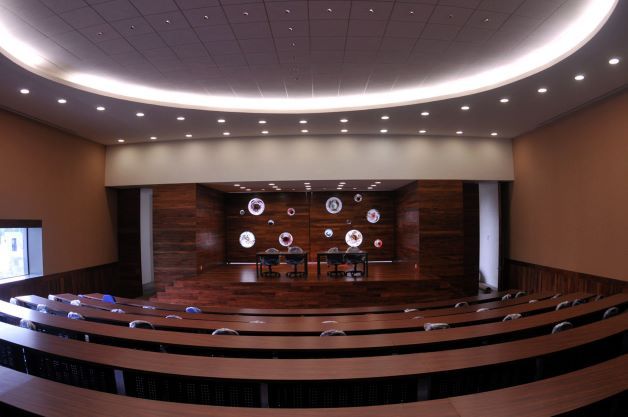Daily use aesthetics of mural-vitral by Francisco Toledo
This work by Francisco Toledo doesn't have a name, and it is made up of 13 round stained glass pieces of different sizes that are set into the two-leaf gate, which also serves as the facade, so that it can be seen both from the outside and the inside.





